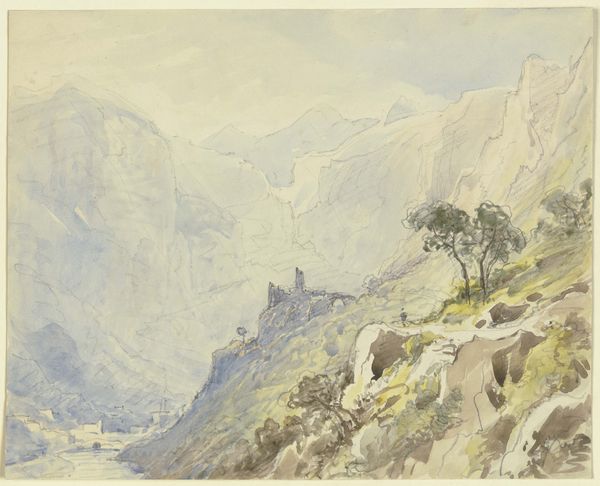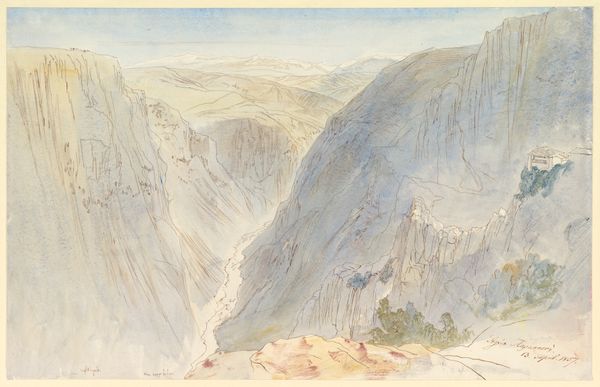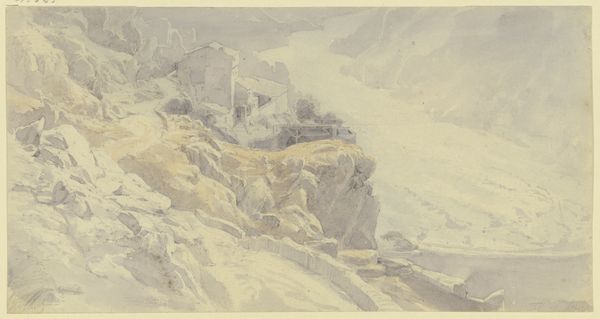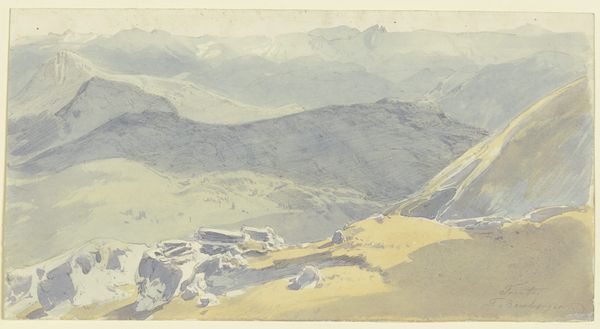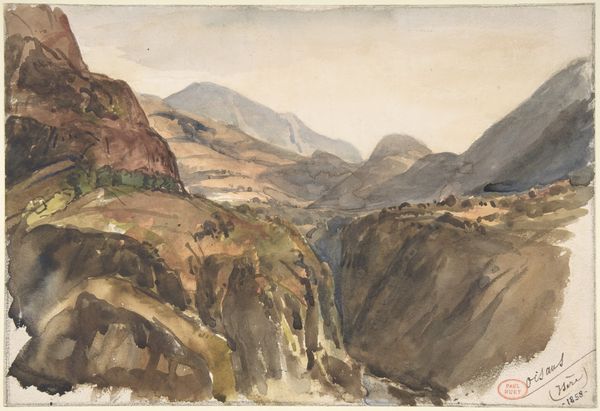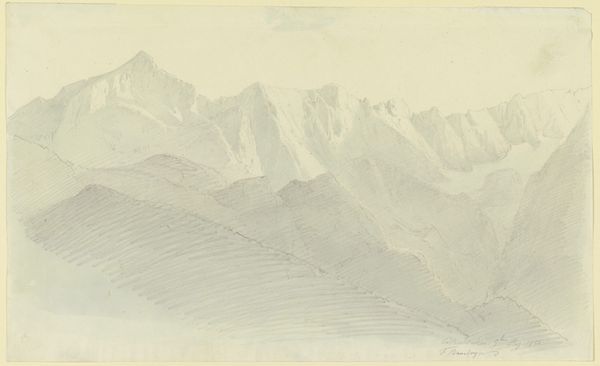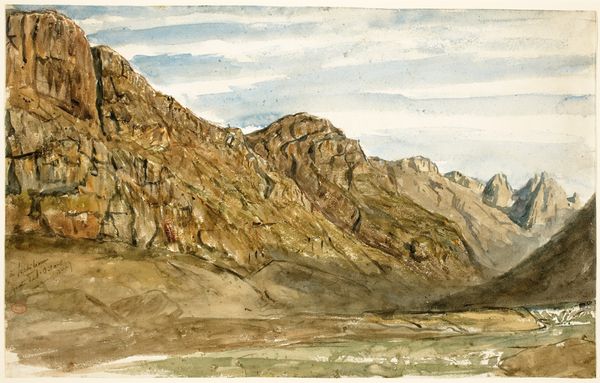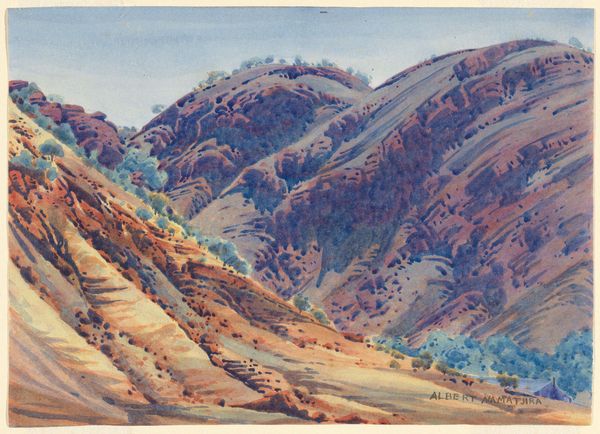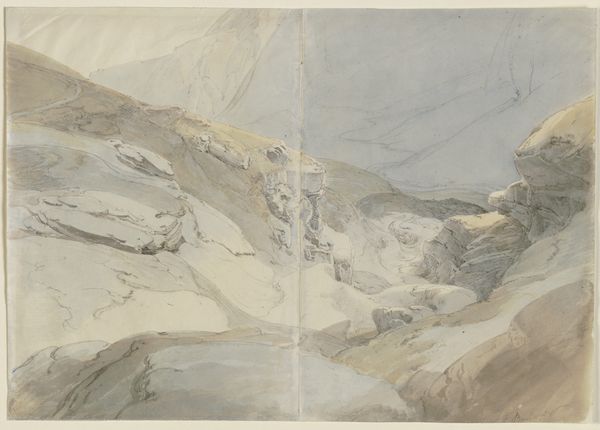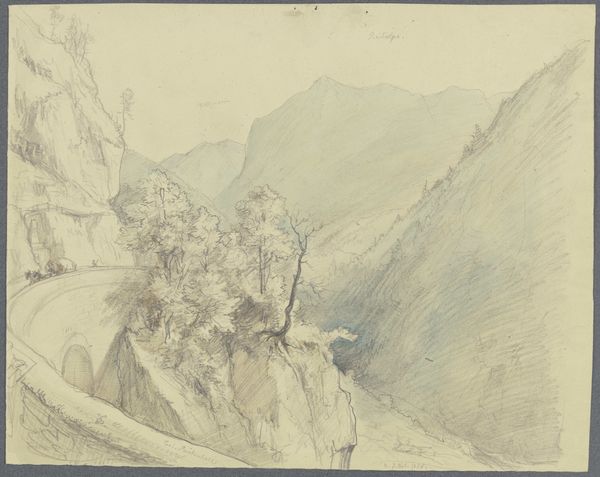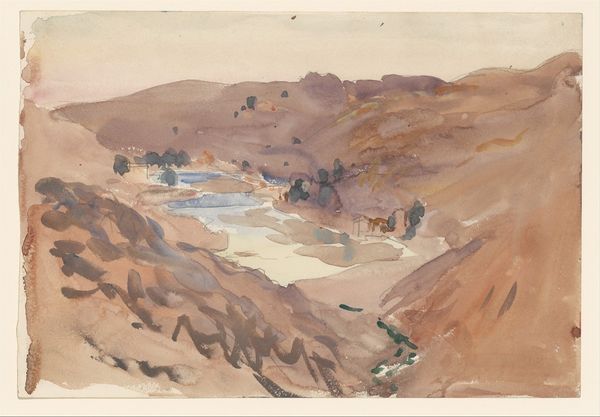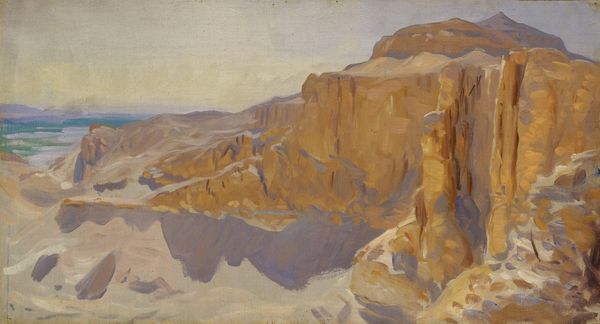
drawing, paper, watercolor
#
drawing
#
16_19th-century
#
pencil sketch
#
landscape
#
paper
#
watercolor
#
romanticism
#
watercolor
Copyright: Public Domain
Curator: Look at this evocative vista – a watercolor and pencil drawing from 1850 by Karl Peter Burnitz, titled "Spanische Gebirgslandschaft" or "Spanish Mountain Landscape," now residing here at the Städel Museum. What catches your eye? Editor: The pervasive greyscale immediately speaks to me; a subdued palette that makes it seem suspended between dream and memory. Notice that imposing structure on the horizon, the architectural mass on the edge of civilization… it speaks volumes. Curator: Absolutely, its placement infuses a narrative tension. Burnitz was very much a product of the Romantic era. He traveled extensively through Europe, drawn, as many were, to the sublime and untamed aspects of nature. I imagine those journeys were foundational to his output, deeply informed by socio-political ideals. Editor: Speaking of cultural import, that tower surely isn’t just for aesthetic value, is it? These kinds of landscape vistas were inherently intertwined with colonialism, with their symbolism laden with notions of conquest and exploitation. Curator: Indeed. Remember that landscape art from this era served as both scientific record and a symbol of ownership. But Burnitz's particular interpretation feels almost…melancholy, as if even he questions the total dominion of humankind over nature. Notice the layering of mountain ranges, the deliberate blurring of lines, and the subtle inclusion of architecture within nature: It subtly shifts how the viewer perceives the narrative of space. It's the symbolic push-and-pull I find really mesmerizing. Editor: A sense of tension is exactly right! And thinking of that subdued tonality, I’m wondering how the social climate of 19th century impacted landscape depictions? Does it echo the anxiety that follows enormous geopolitical and socioeconomic transitions, like industrialisation? Perhaps Burnitz captures a historical perspective, with Spain itself reflecting fading colonial power and historical grandeur through ruin and shadow. Curator: That's a fascinating angle. I would imagine so; even today Spain seems a symbol of changing global order. Thank you for shedding some fresh light on that. Editor: And thank you for illuminating some fresh ideas too. I’ll definitely view other landscapes from this period with a much deeper sense of the history and complexity.
Comments
No comments
Be the first to comment and join the conversation on the ultimate creative platform.
